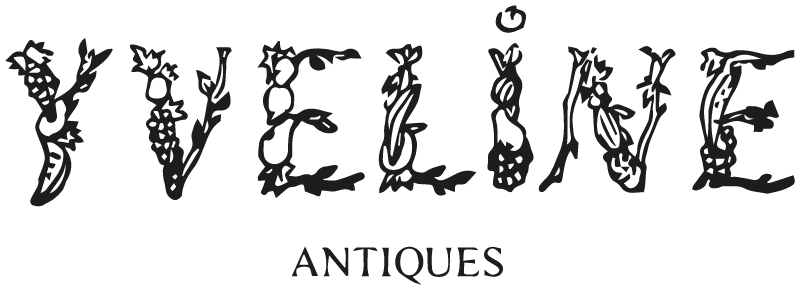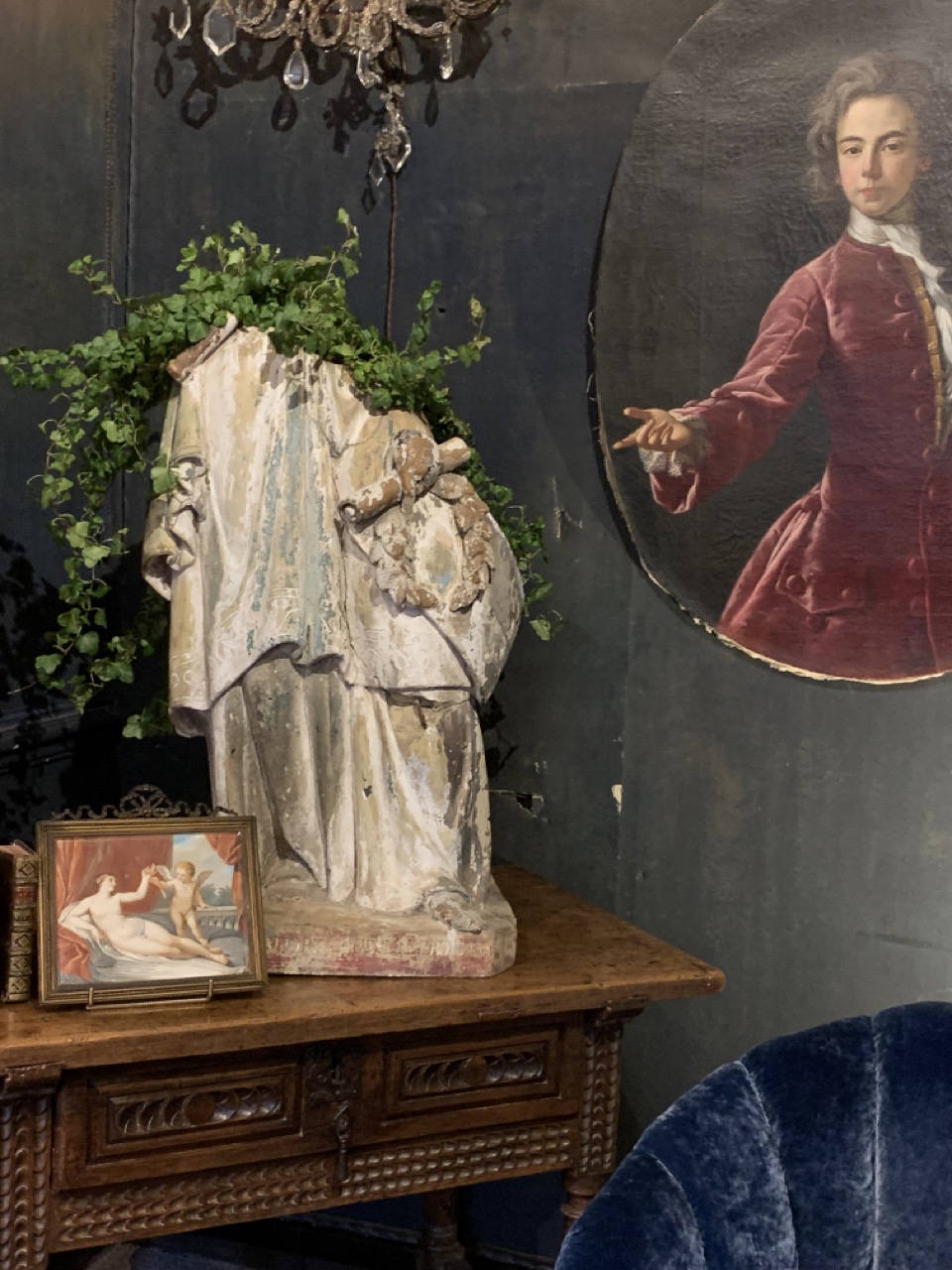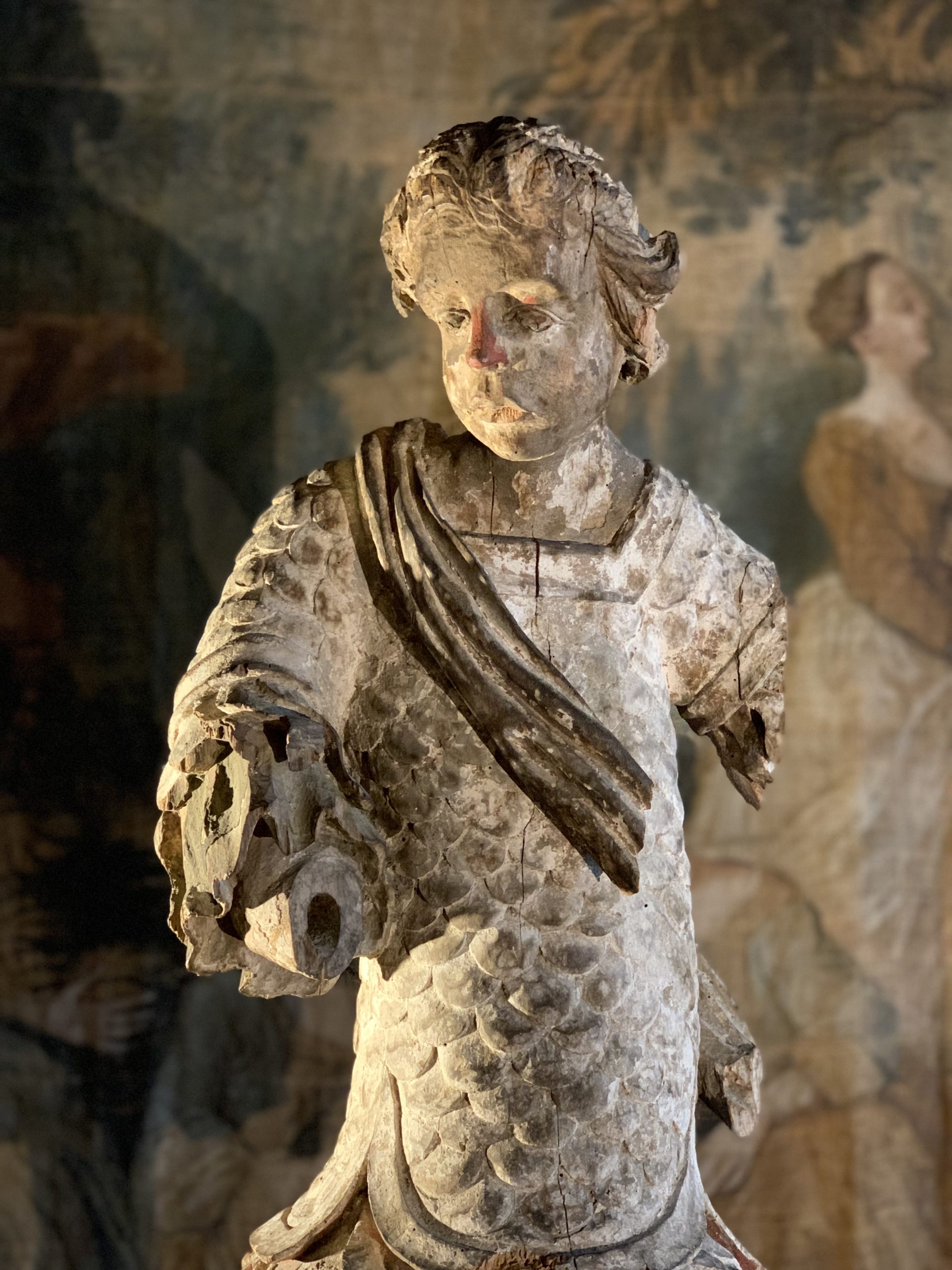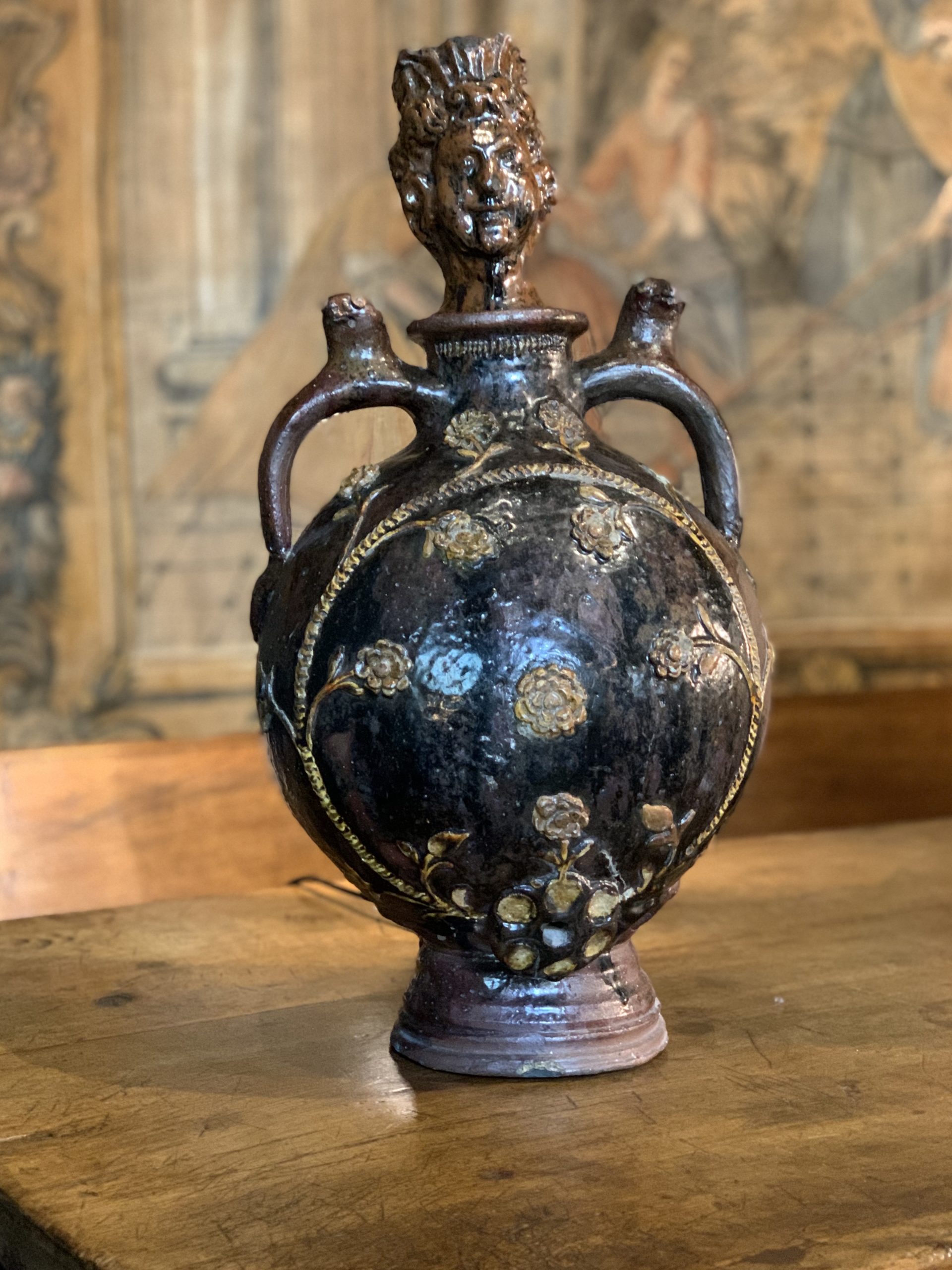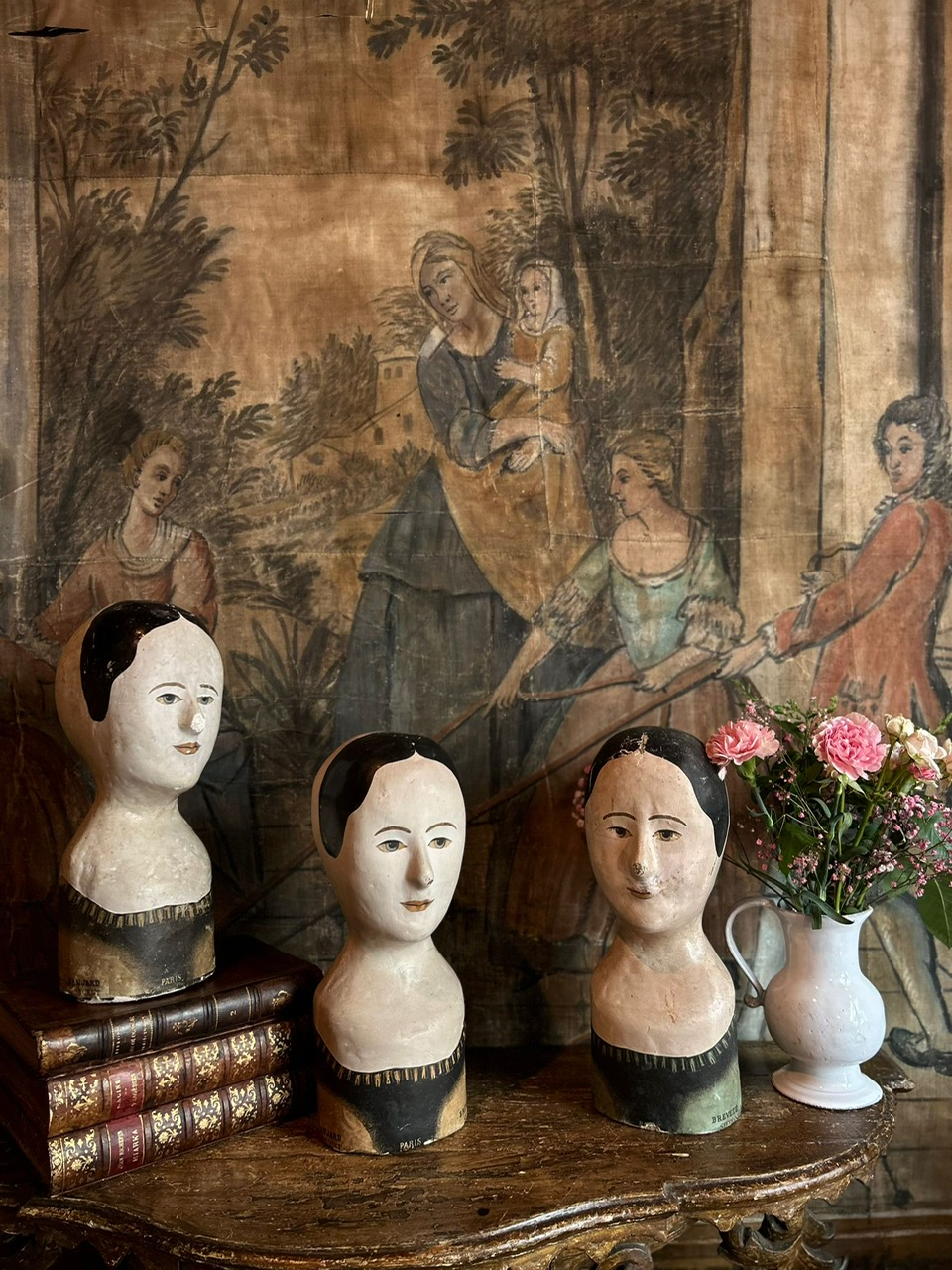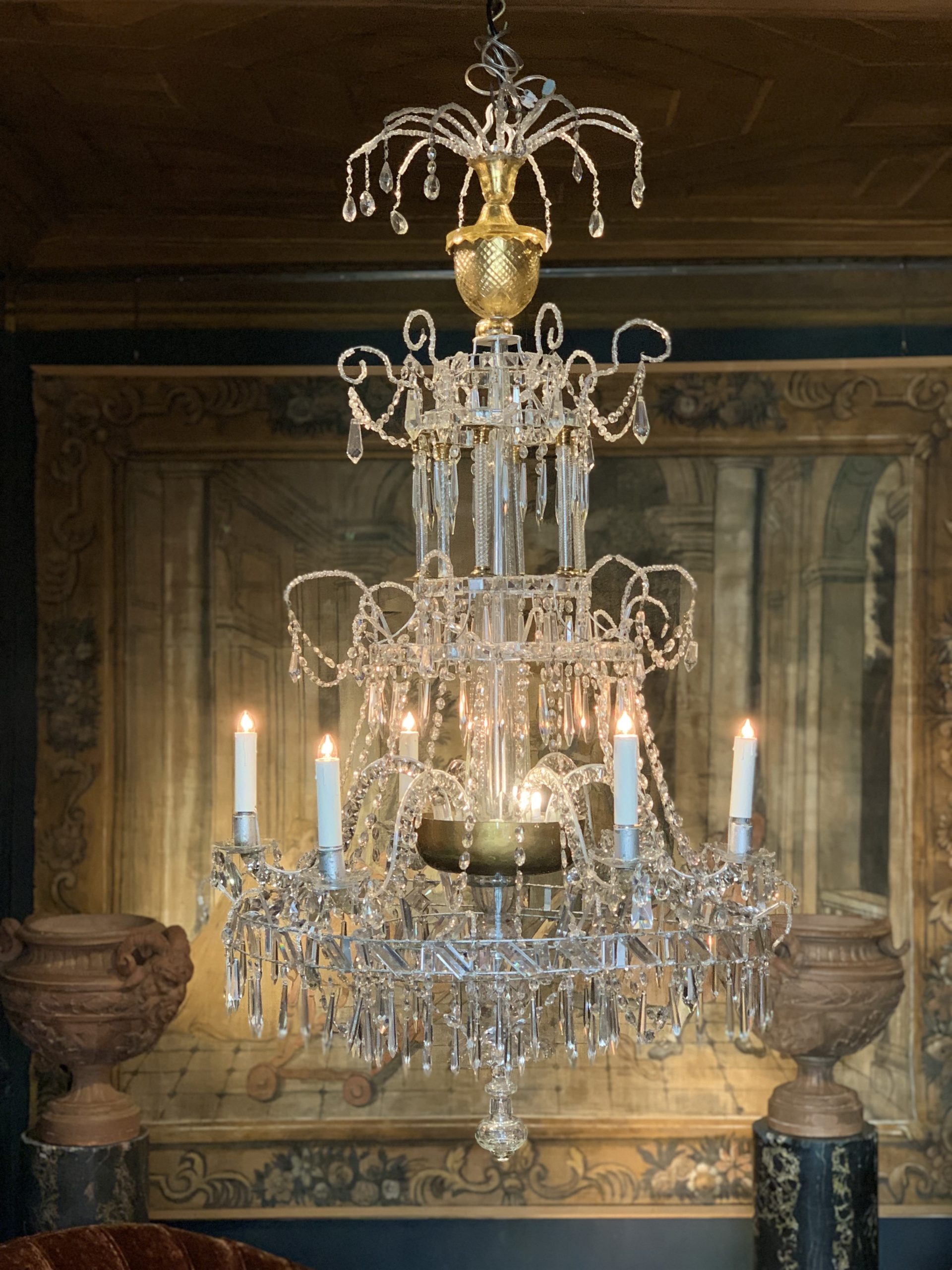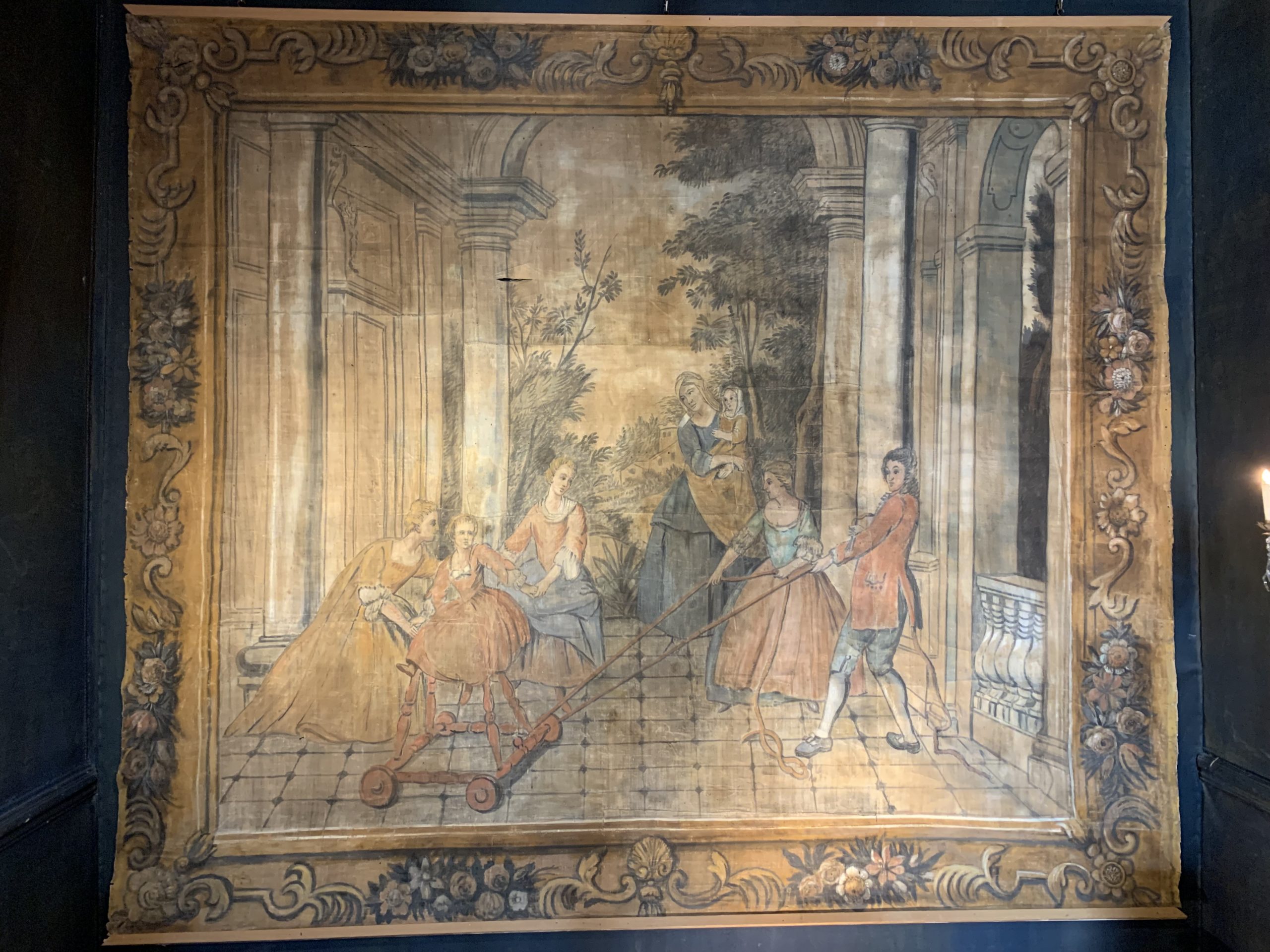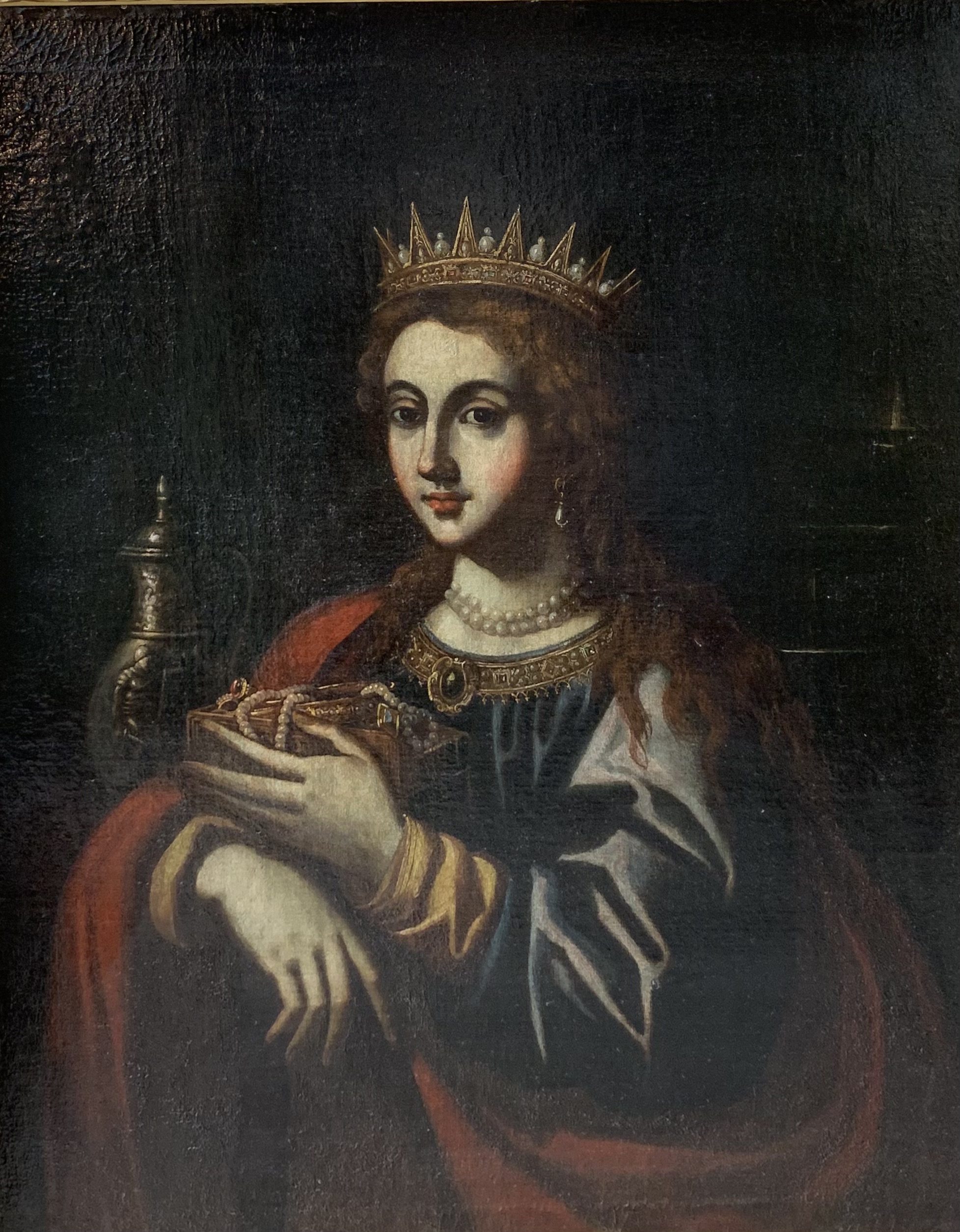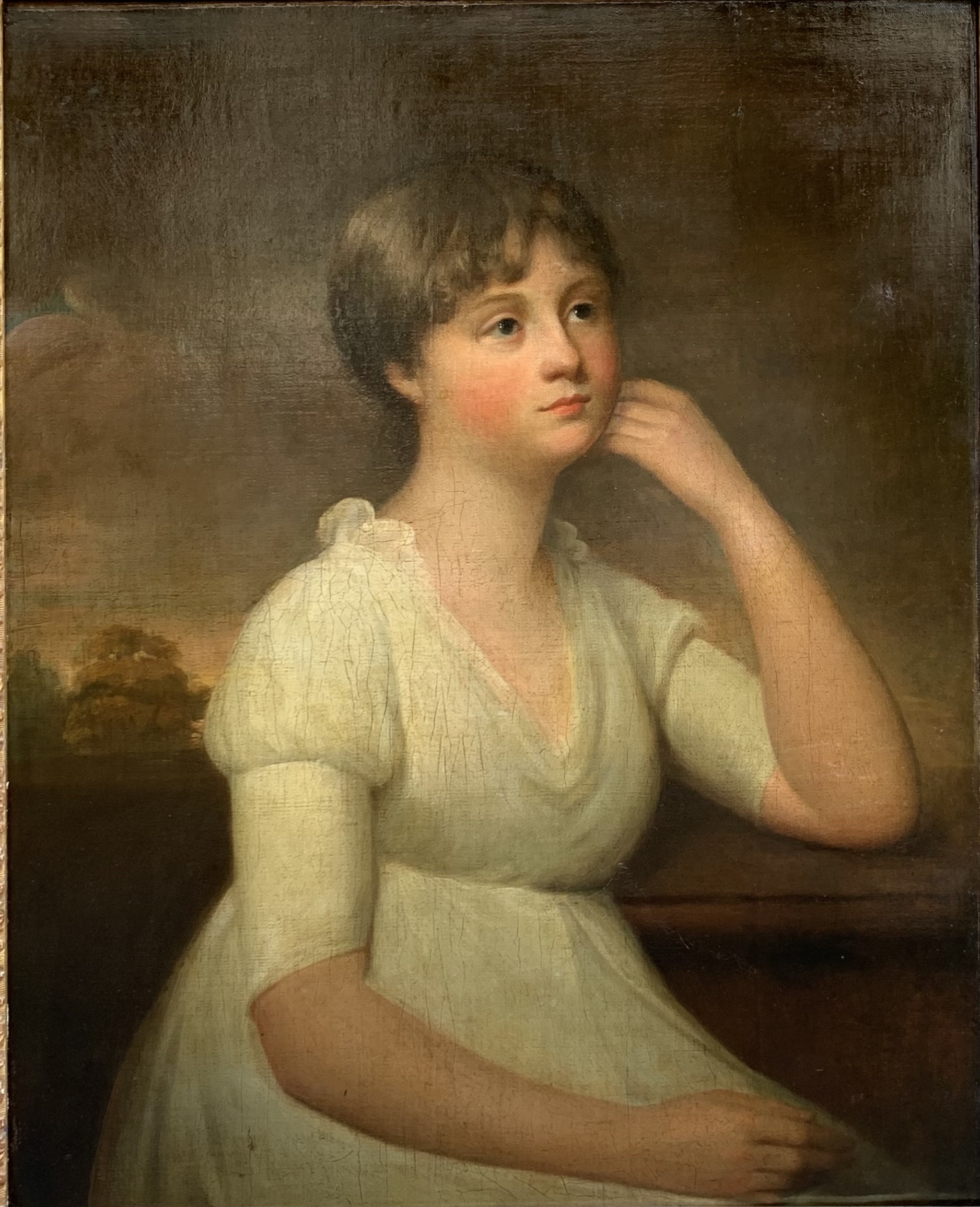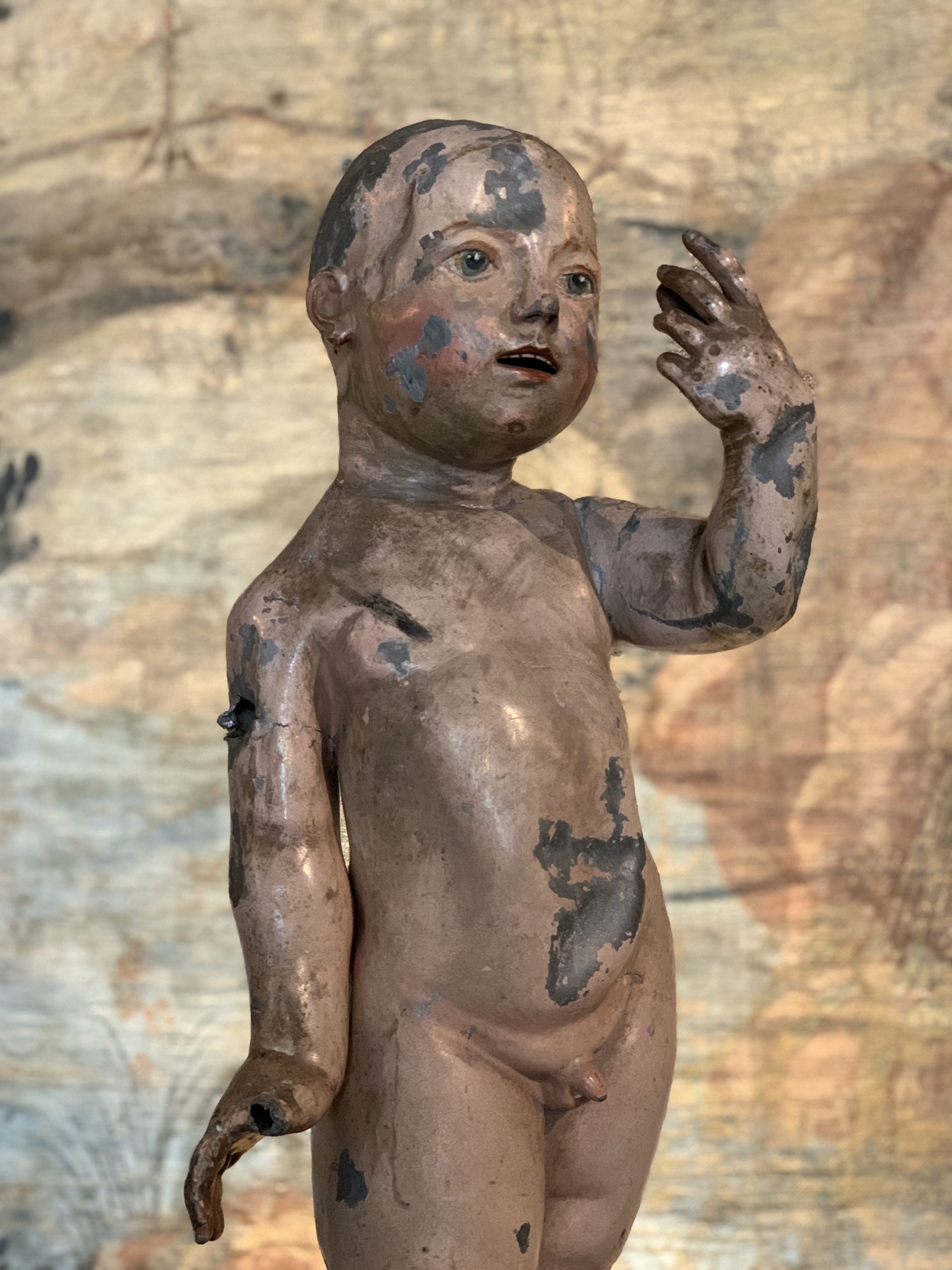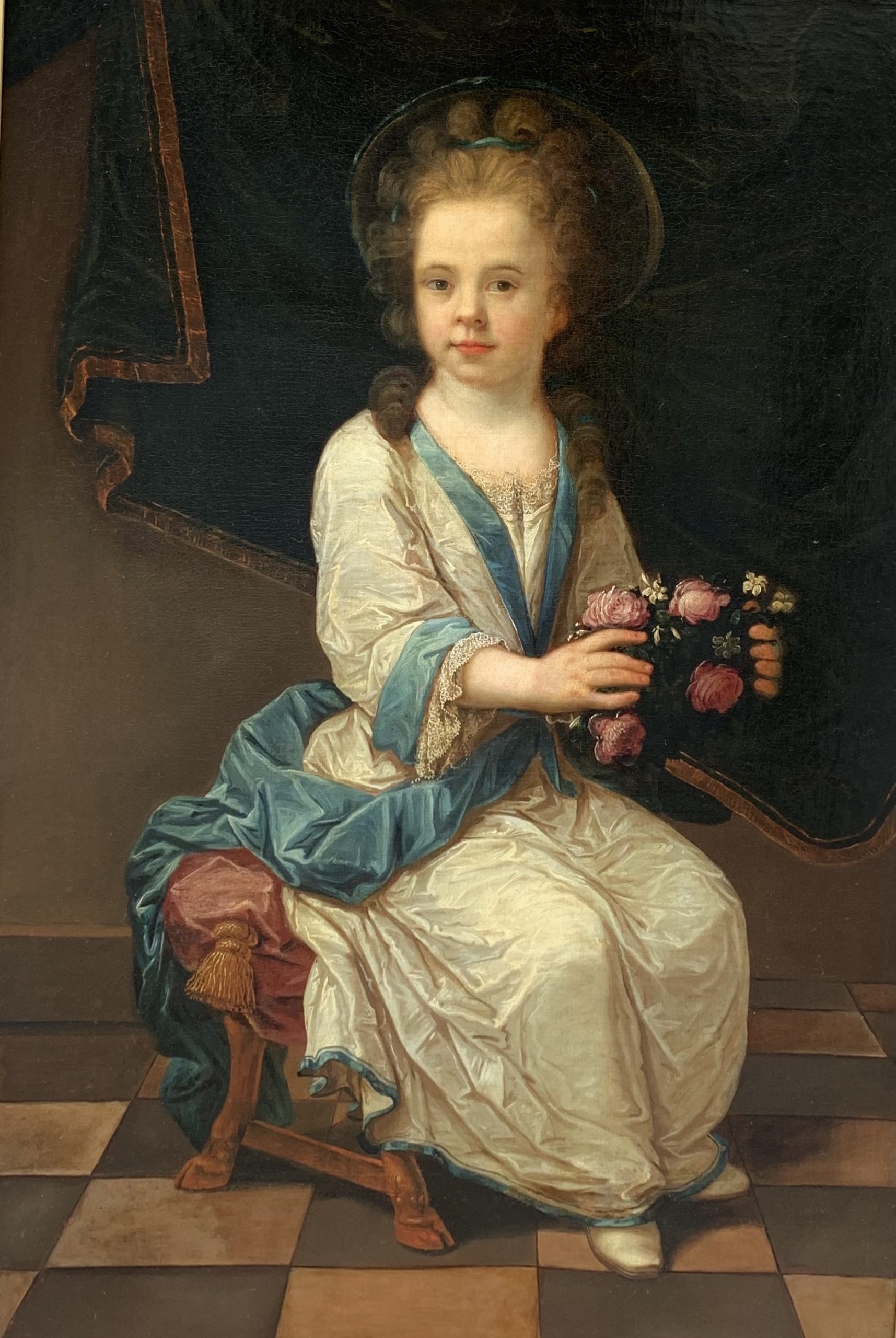Fragment of a terracotta sculpture depicting Caliope. The figure is shown standing. Visible attributes of Caliope on the base the inscription Caliope Poesia Erotica
The archangel is depicted in a dynamic pose which may indicate that the angel was in action. Originally holding a sword, his attribute. He wears a curly “crown” hairdo framing a youthful face, his head bowed in a serene expression.
Work of the first half of the XVIIIth probably from the South of France.
At the end of the Middle Ages pottery villages around the town of Vindefontaine were born. They set up a large potter’s house, and made butter pots, pitchers, inkwells, vases, but above all potty sandstone fountains with brown enamel decorated with kaolin.
XVIII century,
West Normandy,
France.
Marottes in polychrome painted papier-mâché and glued printed paper, presenting a female figure with black hair and a scalloped bodice. Marked DANJARD L. Vincent Paris Patented in 1860 Successor, on the base.
Chandelier composed of 6 lights.
Bead and pendant in cut glass.
Italy, 20th century
Painted canvas “Game scene”
End of the 18th century.
France
Oil on canvas “Allegory of Vanity”. It is probably the vanity of wealth and power whose attributes are visible (money, jewels, weapons (warrior in armor represented on the pitcher), crowns, sceptres…)
Oil on canvas of a young English girl.
Portrait on landscape background.
English school
First part of the 19th century
The lead casts of the “Jesus Child” are very rare objects, they are normally found in wood.
17th century
Spain
Oil on canvas representing a young girl holding a bouquet of flowers.
Important frame in gilded wood.
France
Circa 1730
